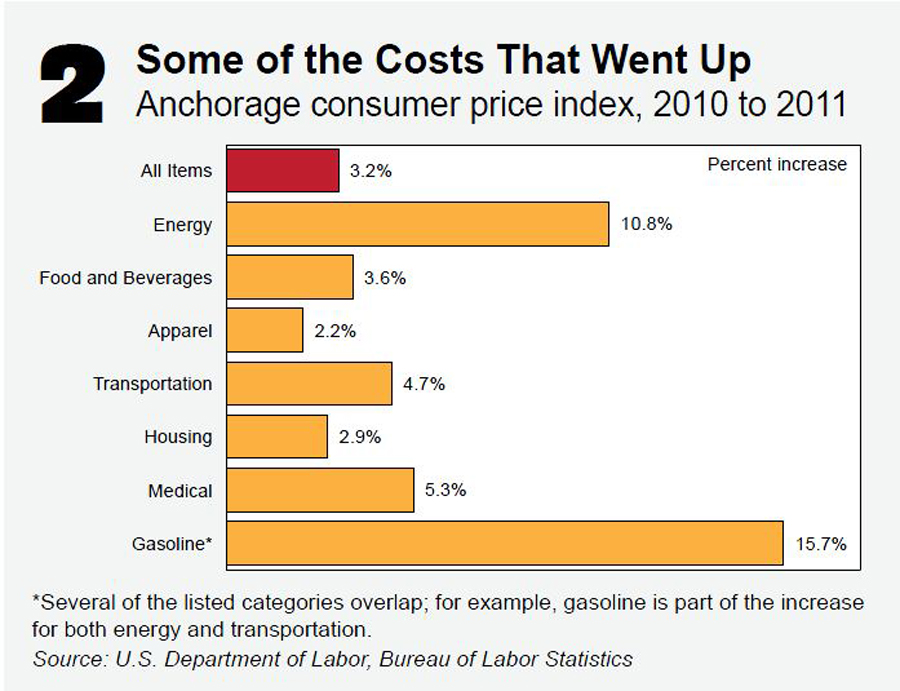Alaska’s cost of living continues to rise, and energy prices remain the big culprit.
According to the state Labor Department, the cost of energy increased 10.8 percent last year. Three times over the decade, energy prices have risen even more.

Gasoline went up nearly 16 percent. Gas and heating fuel are highest in rural Alaska. In the Interior village of Hughes, for example, a gallon of regular gas was $8.25 cents on average in January, and heating fuel was $9 a gallon.
The Anchorage Consumer Price Index – or rate of inflation — rose from 1.8 percent in 2010 to 3.2 percent in Anchorage last year. It’s been higher only once before in the last ten years.
Anchorage is one of 26 cities used by the U.S. Bureau of Labor Statistics to track consumer prices over basic categories. But the Labor Department says it should not be used to show whether one Alaska location is more expensive than another.
All Alaska cities are above the national average when it comes to cost of living, according to the Labor Department. But Juneau was highest at 139 percent of the national average. Fairbanks followed at 137 percent and Anchorage at just over 130 percent.
While Juneau had the highest cost of living in Alaska, it was only 10th nationwide.
Several cities were more expensive places to live, such as San Francisco and New York City.
Read the full report here.